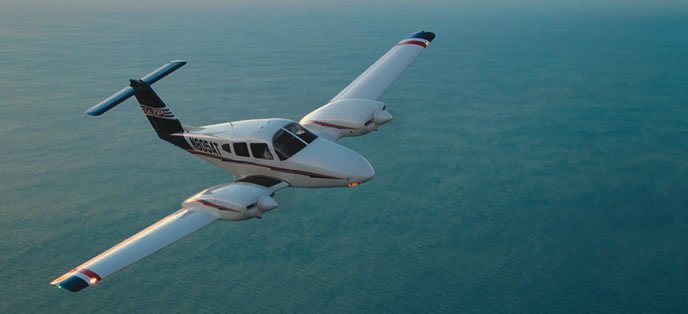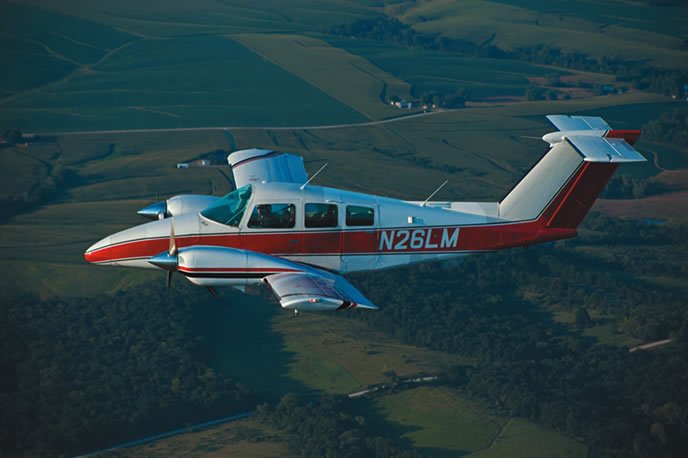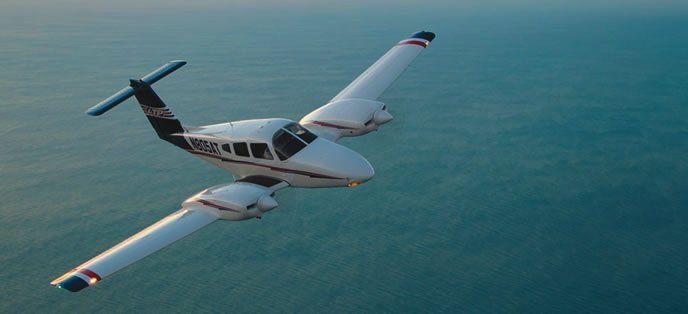Acquiring a multi-engine rating is a rite of passage for any pilot who dreams of flying for a living. There’s no denying the feeling of power you get on first grabbing a fistful of throttles and shoving them up to the stop. There’s also no denying that, unless you pay for a type rating yourself, its the most costly rating you’ll get on a per-hour basis.
With the market offering three production twins being regularly used as trainers, we were curious as to how they stacked up. We flew each one, spoke to several instructors at flight schools that did a significant amount of multi-engine instruction and used an out-of-production twin thats still used for training for comparison.
After all the Vmc demos and engine-out simulations, we came away of the opinion that all of the airplanes have some weaknesses, but none that are crippling-although someone who learns in a Twin Star will need significant additional training to fly anything other than a jet-and that the Tecnam P2006T has the potential to take over the multi-engine training market.

Piper Seminole
In production since 1979 (with a 1983-1989 hiatus), Pipers 180-HP-per-side light-light twin has been a popular multi-engine trainer almost from the start. Offering lower operating costs than its larger-engine competition, the Seminole overcame initial comments about being too easy to fly because it had counter-rotating props (which had been made about the Piper Seneca and Beech Duchess as trainers), and outsold the competing Duchess handily. It was a significant factor in causing the multi-engine training world to move away from the Piper Twin Comanche, Seneca, Aztec, Cessna 310 and Beech Baron.
The Seminole can be thought of a twin-engine Arrow, although about 10 knots faster on 160 more horsepower. Handling is similar, not particularly responsive-especially in roll-but always honest and predictable except for the quirkiness in pitch on takeoff and landing due to Piper not quite getting the T-tail right.
The inconveniences of the T-tail aside, the Seminole proved to be the hands-down favorite trainer among multi-engine instructors and operators we surveyed. Vmc is 56 knots, the same as the flaps-up stall speed. That means that students will almost never experience a violent roll off if the airplane is slowed below Vmc.
Gross weight is 3800 pounds. With 108 gallons of usable fuel, endurance exceeds five hours. Newer Seminoles tend to be heavier than old, so allowable cabin load with full fuel has been diminishing.
Figure on 550 pounds in newer machines and up to 750 pounds in older ones. Single-engine service ceiling (50 FPM rate of climb) is 3200 feet. Single-engine rate of climb at sea level is 212 FPM, pretty anemic when one converts that to feet upward per mile at the 84 knot Vyse-yet its consistent with other piston twins. Max demonstrated crosswind is 17 knots.
Prices for new Seminoles start at $700,000 and go up for glass-something training operators want for ab initio students who tend to be completely at sea when presented with round-dial panels. The Aircraft BlueBook shows prices for pre-hiatus Seminoles below $100,000. Figure that most have been beaten hard as trainers and almost invariably have a damage history.
Schools report that maintenance on older Seminoles can be eye-watering as the airplanes are light and don’t withstand the pounding well, but parts are available. As with any twin, there are a lot of parts that can break, so aggressive maintenance is necessary to maintain availability.
Our survey showed Seminole rental rates, wet, ranged from a low of $234 to $400 per hour.



Diamond DA-42 Twin star
Diamonds diesel-powered Twin Star elicited sharply divergent opinions from flight instructors. Most said it was a lousy multi-engine trainer because it was too easy to operate. In the event of engine failure the pilot pushes the two power levers forward (FADEC and single-power lever operation mean there are no prop or mixture controls), identifies the dead engine and flips its off/on switch to off. The prop feathers automatically. Thats it.
We agree that the Twin Star is a poor trainer for someone who is going to have to make a living and build time flying a piston or turbo-prop twin where engine shutdown is more complicated-significant additional training will be required.
However, we also agree with the instructors who said the Twin Star is the perfect trainer for someone who is going directly into a jet, especially a G1000-equipped jet. Power management is jet-like, even to indicators reading out in percent power (the word load is actually used), and the need to carry significant power on final when the gear and flaps are down is similar to jet operations. In addition, the long wings make control response in yaw and roll ponderous when slow, much like larger airplanes.
Finally, the seven-buss electrical system is comparable to what pilots will experience when they move into turbine aircraft.
Instructors complained about the design of the seats, using the term Diamond back to describe the back pain they developed after sitting in the airplane for any length of time. At the same time, everyone praised the cockpit visibility as we’ll as the astonishingly low noise level and smoothness of the engines and props.
We flew a Twin Star with Rhett Kamm, chief instructor at Independence Aviation at Denvers Centennial Airport. He mentioned that with the stick and the responsiveness of the T-tail, performing steep turns within the tolerances of the Practical Test Standards was difficult. Our experience with them confirmed his observation-and he told us that examiners were aware of the situation.
Rudder forces at Vmc were the highest of the light twins we flew, something that, in our opinion, is good for preparing pilots for the real world of multi-engine flying. Vmc is above stall speed and because the diesels are turbocharged, and do not counter rotate, there is a critical engine that must be respected as we’ll as a sharp roll off at Vmc.
The Twin Star engines have max pressure altitude limitations for starting. It was 8500 feet on the airplane we flew, -which makes single-engine work in the Denver area difficult. Kamm said they flew east some 80 miles to do engine shutdowns over an airport that was at a low enough elevation to provide an acceptable altitude safety margin. In-flight shutdowns are limited to two minutes-after that the engine may not be restarted in flight. According to Kamm, the engine limitations lead to the local FSDO dropping the requirement for engine shutdowns and restarts on checkrides in the Twin Star.
On only 135 HP a side and with a 3935-pound gross weight, all-engine rate of climb exceeds 1100 FPM, however, the published single-engine rate of climb is atrocious-150 FPM at sea level. The single-engine service ceiling is 4000 feet. Realistic cruise speed is 145 knots on 12 to 14 GPH (newer ones are faster). With the main tanks full, endurance is about five hours and 690 pounds can be carried in the cabin.
Despite miserly fuel consumption, the life limit on the gearboxes of the diesels and the engines themselves, as we’ll as the need for specialized training for technicians to work on the Twin Star, the DA-42 has proven painfully expensive for many owners. Kamm told us that the average annual inspection ran $12,000, before any squawks were addressed. Operational costs plus amortization of the purchase price (starting at over $700,000) of a new twin means that rental rates for the Twin Star that we saw hovered around the $340-per-hour mark.
Tecnam P2006T
Tecnam has got to come up with a catchy name for its compact, fuel-sipping twin, P2006T just doesnt cut it, especially as we think it has the potential to break out as the multi-engine trainer. With over 3000 airplanes produced, Tecnam is no rookie in the aviation world. It used its experience making LSAs to come up with a twin that has a gross weight of only 2712 pounds using a pair of the proven 98-HP Rotax 912 S3 engines.



Performance is surprising and impressed us: the all-engine rate of climb is over 1100 FPM, with cruise of 145 knots on a total of 10 GPH. Single-engine performance is as good or better than the other twins we compared: single-engine ROC at sea level is 230 FPM and single-engine service ceiling is 7000 feet.
Fifty gallons of usable fuel gives an endurance of about 4:30, although wed like to have had a fuel flow gauge on the Garmin G950 glass panel in the Tecnam so that wed be a little more comfortable that we had the power set correctly. With the tanks full, it will carry 648 pounds in the cabin.
The Rotax engines prefer mogas (oil change intervals decrease with avgas), plus more and more shops have experience with Rotax engines, so we think Tecnams lightweight approach could be the way to go for reasonably priced multi-engine training.
Priced at just over $600,000 equipped, the P2006T is at least $100,000 cheaper than the Twin Star and Seminole. Even allowing for amortization of the purchase price, we saw rental rates under $250 per hour.
Because the engines only develop 98 HP, they cant drive big alternators-each one only puts out 40 amps. That means load shedding if an engine fails in flight, something that we think will help pilots in training to fly other piston twins.
We liked the handling of the P2006T, it was precise in all axes and responded more as one would expect in a heavier twin. The engines are not counter rotating. Engine power was down enough at 8500 feet that we did not experience Vmc roll off before getting an indication of approaching stall.
Visibility is the best of the bunch; the pilots sit ahead of the engines. For what appears to be a small airplane, the cabin is roomy and comfortable with plenty of leg- and headroom. Because of the proximity of the props, the ability to open a window is limited. Although there is a good ventilation system, the cabin can be uncomfortable on warm days. On the other hand, cabin heat, as with the Twin Star, comes from the engines instead of a Janitrol heater in the nose-burning avgas as is the case in most piston twins. After far too many flights in frigid cabins because combustion heater systems failed, were all for heat from the engines.
The gear takes 18 seconds for its cycle, an eternity if trying to clean up the airplane following an engine failure shortly after takeoff.
We did not like the POH for the P2006T or the Twin Star-they are a poor result of European and U.S. certification with a mix of units of measure, terms and user-unfriendly presentation. Often it was necessary to go through a series of appendices to find out whether a limitation from early certification had been removed or changed.
Weve certainly seen a lot of beat-up Seminoles and Duchesses, so were going to be watching to see how the P2006T handles the rigors of training. The stall warning vane is directly in front of the fuel filler cap. Despite a protective cover for the stall vane, someone had bumped the vane on the airplane we flew, so the stall warning was sounding anytime we were below 85 knots.



Beechcraft Duchess
Despite being out of production for over 30 years, weve included the Beech Duchess in this comparison because we regularly see them used as multi-engine trainers, just as we do Seminoles of comparable vintage.
Instructors and operators all spoke we’ll of the Duchess, emphasizing its handling (almost too good) and lack of quirks during takeoff and landing-Beech did its T-tail right. Where we heard frustration was over the availability of parts.
Performance, on 180 HP a side, is on a par with the other twins in this article-figure on a 140-knot cruise, 900-FPM all-engine rate of climb, 250-FPM single-engine rate of climb and able to carry 631 pounds in the cabin with a full load of fuel (100 gallons).
Handling is standard Beechcraft, stable and predictable, with pleasantly fast ailerons. Steep turns and slow flight are without vice. The counter-rotating engines mean stall speed is reached we’ll before Vmc-all of which make this an almost too-easy trainer, much in the Seminole model.
We like having two cabin doors; we think it adds to convenience and safety. The cabin is almost too big, an invitation to overloading, a potentially fatal error when dealing with the anemic single-engine rate of climb endemic to piston twins. We like the tabs in the filler neck of each fuel tank-its easy to carry a precise amount of fuel when you don’t want to fill the tanks.


The Duchess will be on flight lines for some years to come because one can be purchased for we’ll under $100,000 and the hourly operating costs arent bad-we saw rental rates from $195 to $285 per hour. However, we think demand will drop as students want glass panels and ab initio programs grow. As a trainer, we frankly prefer an airplane that is more demanding of the pilot than the Duchess. And, as they get longer in the tooth, the cost of maintaining them will eventually become unacceptable as things continue to break-on our last flight in a Duchess, something failed in the combustion heater system and we spent most of it shivering.
Conclusion
We don’t see a boom in the demand for multi-engine trainers, just a slow, steady need for new, glass-cockpit versions as pilots who came up with glass demand them. We like the Tecnam P2006T for its more demanding handling than the Seminole-we think its a better training tool for turning out pilots who are prepared for other twins that are vicious if the pilot is careless with speed control. If it holds up in a training environment and Tecnam establishes a satisfactory service network, then its significantly lower initial and operating costs will make it a no-brainer for schools. Otherwise, the Seminole should soldier on as the number one choice for training programs.


